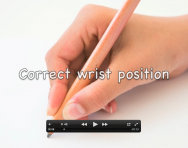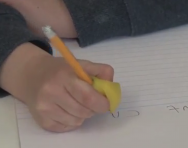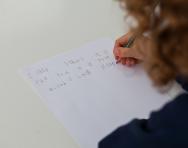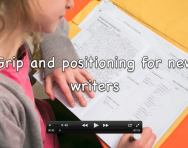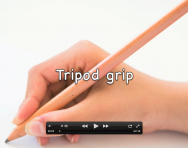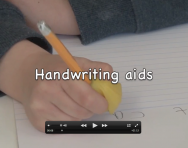Video: Correcting pencil grip
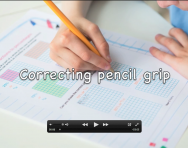
The dynamic tripod grasp is the ideal pencil grip for handwriting, as it allows children to write comfortably, fluently and at speed.
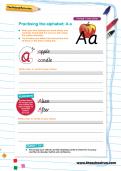
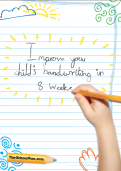
Improve handwriting in 10 minutes a day
- Step-by-step handwriting guide
- Over 200 worksheets
- From patterning to cursive
We offer advice from Occupational Paediatric Therapist Catherine Elsey from the National Handwriting Association to help you correct your child's hand and wrist position and develop a good tripod grasp.
When should you correct your child's pencil grasp?
Although the dynamic tripod pencil grasp is the most efficient way for your child to hold their pencil, many of us go through life with less-than-perfect pencil grips that, nevertheless, don't impact significantly on the way we write. So how can you tell whether your child's pencil grasp is causing problems? Warning signs to look out for include:
- Your child complaining of a tired, uncomfortable or painful hand while writing
- Forming letters that look spiky rather than well rounded
- Struggling to keep letters uniform sizes, and on the line
- Difficulty in writing fluently - this might be seen if they take longer than their classmates to complete written work
How to correct your child's pencil grasp
The dynamic tripod grasp is relatively simple to master, but correcting bad habits can take time. To hold their pencil correctly, your child should pinch it between thumb and forefinger slightly above where the sharpened nib meets the painted shaft, with the middle finger behind the pencil, acting like a shelf for the shaft to rest on. There should be a nice, round, open space between the pinched thumb and forefinger, and the ring and little fingers should be tucked into the palm. Try these tips for encouraging a good dynamic tripod grasp:
- At home, provide short pencils and crayons, about 5cm long: this will force your child to hold the tool correctly.
- Let your child practise mark-making on upright surfaces, such as an easel.
- Take the pressure off writing, and work on your child's pencil grasp while they're drawing, colouring or playing games like Hangman or Noughts and Crosses.
- Talk to your child's teacher about whether a handwriting aid, such as a pencil grasp, might help.
- This simple trick will help your child to pick up their pencil correctly every time.

Give your child a headstart
- FREE articles & expert information
- FREE resources & activities
- FREE homework help
